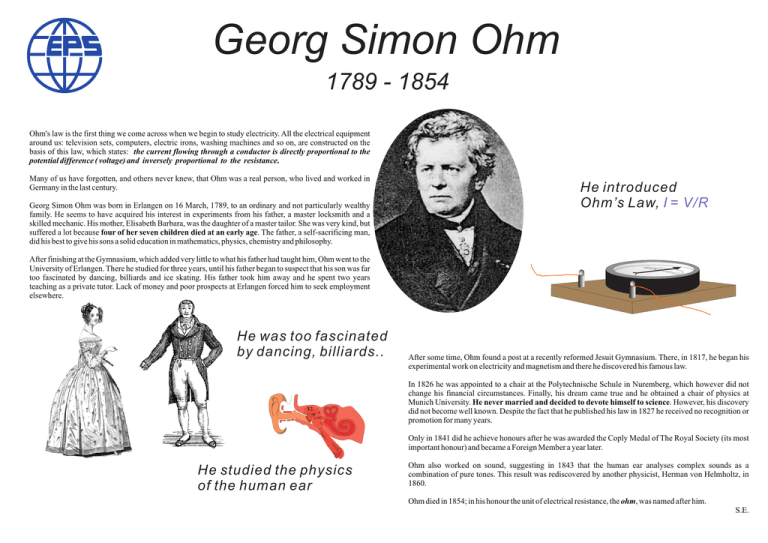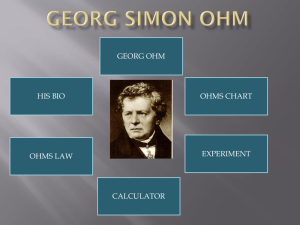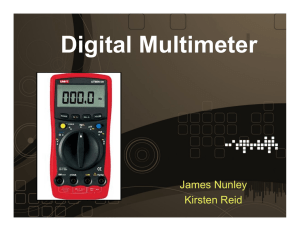Georg Simon Ohm
advertisement

Georg Simon Ohm 1789 - 1854 Ohm's law is the first thing we come across when we begin to study electricity. All the electrical equipment around us: television sets, computers, electric irons, washing machines and so on, are constructed on the basis of this law, which states: the current flowing through a conductor is directly proportional to the potential difference ( voltage) and inversely proportional to the resistance. Many of us have forgotten, and others never knew, that Ohm was a real person, who lived and worked in Germany in the last century. Georg Simon Ohm was born in Erlangen on 16 March, 1789, to an ordinary and not particularly wealthy family. He seems to have acquired his interest in experiments from his father, a master locksmith and a skilled mechanic. His mother, Elisabeth Barbara, was the daughter of a master tailor. She was very kind, but suffered a lot because four of her seven children died at an early age. The father, a self-sacrificing man, did his best to give his sons a solid education in mathematics, physics, chemistry and philosophy. He introduced Ohm’s Law, I = V/R After finishing at the Gymnasium, which added very little to what his father had taught him, Ohm went to the University of Erlangen. There he studied for three years, until his father began to suspect that his son was far too fascinated by dancing, billiards and ice skating. His father took him away and he spent two years teaching as a private tutor. Lack of money and poor prospects at Erlangen forced him to seek employment elsewhere. He was too fascinated by dancing, billiards.. After some time, Ohm found a post at a recently reformed Jesuit Gymnasium. There, in 1817, he began his experimental work on electricity and magnetism and there he discovered his famous law. In 1826 he was appointed to a chair at the Polytechnische Schule in Nuremberg, which however did not change his financial circumstances. Finally, his dream came true and he obtained a chair of physics at Munich University. He never married and decided to devote himself to science. However, his discovery did not become well known. Despite the fact that he published his law in 1827 he received no recognition or promotion for many years. Only in 1841 did he achieve honours after he was awarded the Coply Medal of The Royal Society (its most important honour) and became a Foreign Member a year later. He studied the physics of the human ear Ohm also worked on sound, suggesting in 1843 that the human ear analyses complex sounds as a combination of pure tones. This result was rediscovered by another physicist, Herman von Helmholtz, in 1860. Ohm died in 1854; in his honour the unit of electrical resistance, the ohm, was named after him. S.E.








